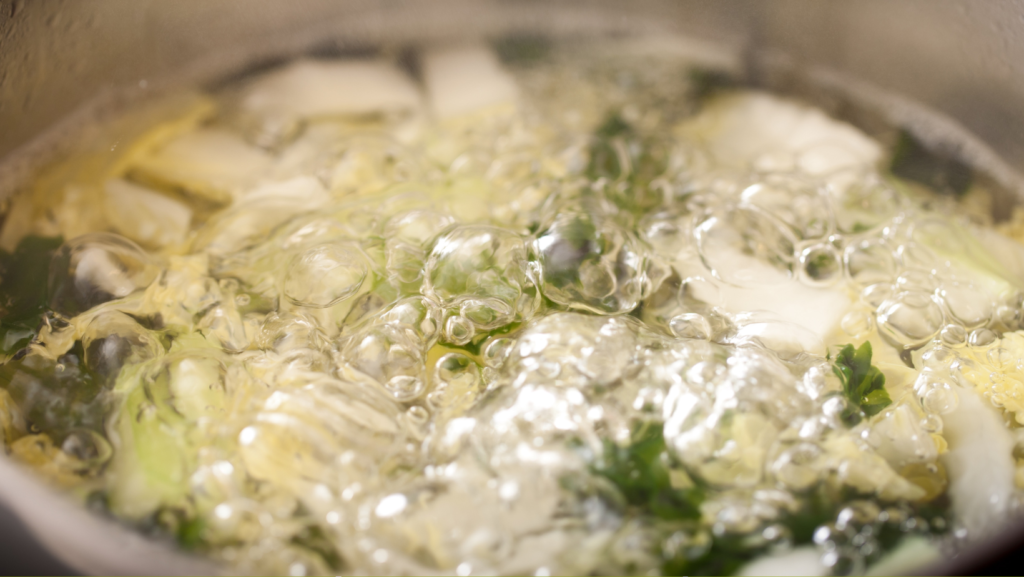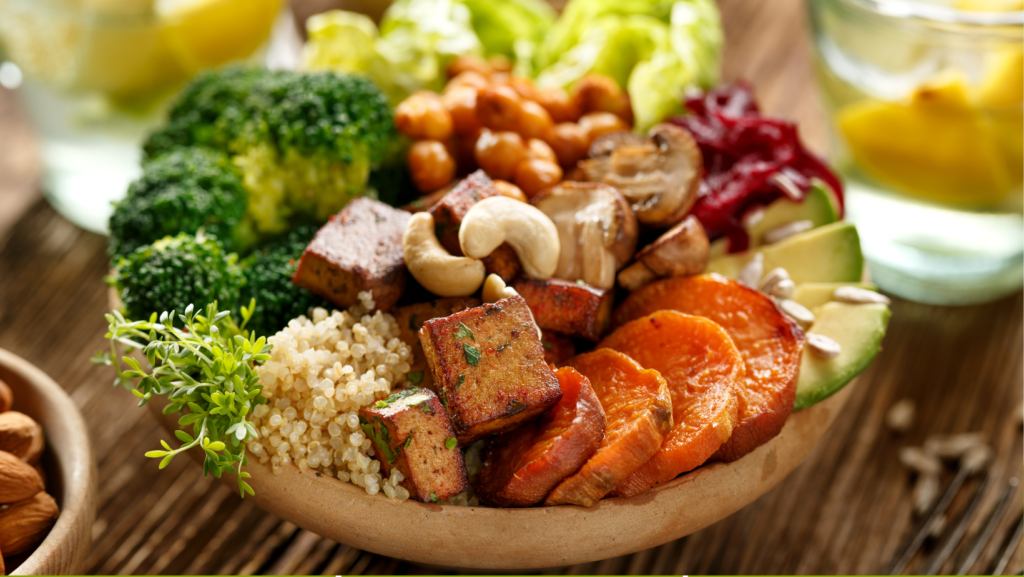Health
Effortless Healthy Meal Prep Recipes: A Busy Professional’s Guide to Nutritious Dining

Healthy Meal Prep Recipes for Busy Professionals: Your Ultimate Guide to Quick and Nutritious Meals
Why Healthy Meal Prep Matters
In the chaos of daily life, it’s easy to succumb to the convenience of fast food or pre-packaged meals. However, the long-term consequences on health can be significant.
Poor nutrition not only affects energy levels but also contributes to stress, fatigue, and a decline in overall health.
By investing a little time in meal prep, you can take control of your diet, ensuring you nourish your body with the right nutrients.
Getting Started: Essential Meal Prep Tools
Before diving into the recipes, let’s equip your kitchen with the essential tools for efficient meal prep.
A sharp knife, cutting board, airtight containers, and a reliable set of measuring cups and spoons are your kitchen allies. Investing in a quality slow cooker or instant pot can also save you valuable time in the long run.
Breakfast Boost: Quick and Energizing Morning Recipes
Overnight Oats with Berries and Almonds

Start your day right with a powerhouse of nutrients. Combine rolled oats, almond milk, chia seeds, and a mix of your favorite berries in a jar. Leave it in the fridge overnight, and voilà – a nutritious and delicious breakfast awaits you in the morning.
Veggie-Packed Breakfast Burritos

Veggie-Packed Breakfast Burritos
Prepare a batch of veggie-loaded burritos on the weekend and freeze them for a grab-and-go breakfast during the week. Scrambled eggs, black beans, sautéed veggies, and a sprinkle of cheese wrapped in a whole-grain tortilla – a satisfying start to your day.
Lunchtime Solutions: Quick and Wholesome Midday Meals
Quinoa Salad with Roasted Vegetables

Quinoa Salad with Roasted Vegetables
Quinoa is a versatile and protein-packed grain that forms the base of this vibrant salad. Roast your favorite vegetables, toss them with cooked quinoa, and drizzle with a zesty vinaigrette. Divide into containers for a week’s worth of nutritious lunches.
Ingredients:
For the Salad:
- 1 cup quinoa, rinsed
- 2 cups water or vegetable broth
- 1 large sweet potato, peeled and diced
- 1 red bell pepper, diced
- 1 zucchini, diced
- 1 red onion, thinly sliced
- 2 tablespoons olive oil
- Salt and pepper to taste
- 1 cup cherry tomatoes, halved
- 1/2 cup crumbled feta cheese (optional)
For the Dressing:
- 1/4 cup olive oil
- 2 tablespoons balsamic vinegar
- 1 clove garlic, minced
- 1 teaspoon Dijon mustard
- Salt and pepper to taste
- 1 tablespoon fresh parsley, chopped (optional)
Instructions:
- Preheat Oven: Preheat your oven to 400°F (200°C).
- Roast Vegetables: In a large bowl, toss the sweet potato, red bell pepper, zucchini, and red onion with olive oil, salt, and pepper. Spread the vegetables in a single layer on a baking sheet. Roast in the preheated oven for 25-30 minutes or until the vegetables are tender and slightly browned, stirring halfway through.
- Cook Quinoa: While the vegetables are roasting, rinse the quinoa under cold water. In a medium saucepan, combine the quinoa and water or vegetable broth. Bring to a boil, then reduce the heat to low, cover, and simmer for 15-20 minutes, or until the quinoa is cooked and the liquid is absorbed. Fluff the quinoa with a fork and let it cool.
- Prepare Dressing: In a small bowl, whisk together the olive oil, balsamic vinegar, minced garlic, Dijon mustard, salt, and pepper. Add chopped parsley if desired.
- Assemble Salad: In a large bowl, combine the cooked quinoa, roasted vegetables, cherry tomatoes, and feta cheese (if using). Pour the dressing over the salad and toss gently to combine.
- Serve: Taste and adjust the seasoning if needed. Serve the quinoa salad at room temperature or chilled.
This Quinoa Salad with Roasted Vegetables is not only delicious but also packed with nutrients. Feel free to customize it by adding your favorite herbs, nuts, or additional vegetables. Enjoy!
Chicken and Broccoli Stir-Fry

Chicken and Broccoli Stir-Fry
Keep it simple yet flavorful with a chicken and broccoli stir-fry. Marinate chicken strips in a soy-ginger sauce, stir-fry with broccoli and other veggies, and pack into containers with brown rice for a quick and satisfying midday meal.
Dinner Delights: Wholesome Dinners in a Flash
One-Pan Baked Salmon with Asparagus

One-Pan Baked Salmon with Asparagus
Simplify your evenings with a one-pan wonder. Place salmon fillets on a baking sheet, surround them with asparagus spears, drizzle with olive oil, and season to perfection. Pop it in the oven for a hassle-free, nutritious dinner.
Turkey and Sweet Potato Chili

Turkey and Sweet Potato Chili
Prepare a hearty batch of turkey and sweet potato chili over the weekend, and enjoy it throughout the week. Packed with protein and fiber, this comforting dish is a perfect way to end a busy day.
Smart Snacking: Quick Bites to Keep You Energized
Greek Yogurt Parfait with Granola and Berries

Greek Yogurt Parfait with Granola and Berries
For a satisfying snack, layer Greek yogurt with granola and a medley of berries. This parfait is not only delicious but also rich in protein and antioxidants, making it an ideal pick-me-up during a hectic day.
Hummus and Veggie Sticks

Hummus and Veggie Sticks
Keep a supply of hummus and pre-cut veggies in your fridge for a quick and nutritious snack. Carrot sticks, cucumber slices, and bell pepper strips paired with creamy hummus make for a tasty and wholesome treat.
Meal Prep Tips for Success
Successful meal prep is all about planning and organization. Here are some tips to ensure your journey to healthier eating is smooth and sustainable:
Plan Your Menu in Advance: Take time each week to plan your meals. Consider your schedule and choose recipes that align with your time constraints.
Batch Cooking Is Your Friend: Embrace batch cooking for key components like grains, proteins, and veggies. Having these essentials prepped in advance will save you time during the week.
Conclusion
In the realm of busy professionals, maintaining a healthy diet might seem like a challenge, but with strategic meal prep, it becomes an achievable goal.
By incorporating these recipes and tips into your routine, you can enjoy nutritious, home-cooked meals without sacrificing precious time. Remember, investing in your health today pays dividends in the long run.
Frequently Asked Questions (FAQs)
Can I customize the recipes to suit my dietary preferences?
Absolutely! Feel free to adapt the recipes to meet your dietary needs and preferences. Swap ingredients, adjust portion sizes, and make the recipes your own.
How long do the prepared meals stay fresh in the fridge?
Most of these recipes can be stored in the fridge for 3-4 days. For longer shelf life, consider freezing individual portions and thawing them as needed.
Are these recipes suitable for weight loss?
Yes, these recipes are designed to be nutritious and balanced. However, individual calorie needs vary, so it’s essential to monitor portion sizes based on your weight loss goals.
Can I use these recipes for a family with kids? Absolutely! These recipes are family-friendly and can be enjoyed by individuals of all ages. Get the kids involved in the meal prep process for added fun.
Are there alternatives for vegetarians or vegans?
Certainly! Many recipes offer vegetarian or vegan alternatives. Substitute meat with plant-based proteins and dairy with non-dairy options to suit your preferences.
How can I ensure variety in my meals each week?
Rotate the recipes and ingredients to keep things interesting. Experiment with different spices, herbs, and sauces to add variety to your meals.
Can I use these recipes for weight gain or muscle building?
Yes, these recipes provide a good balance of macronutrients and can be adapted to support weight gain or muscle-building goals. Adjust portion sizes and incorporate additional snacks as needed.
Note: The information provided is for general informational purposes only and should not be considered as professional advice. Consult with a healthcare or nutrition professional for personalized guidance.
Artifiсiаl Intelligenсe
Metaverse Unveiled: Breaking Down the Virtual Frontier with Raw Power and Unraveling Truths

Metaverse Unveiled: Breaking Down the Virtual Frontier with Raw Power and Unraveling Truths
The Metaverse Decoded: Understanding the Basics
Unleashing the Power Within: Metaverse’s Impact on Industries
Navigating the Virtual Landscape: Tools and Platforms
Metaverse Realities: Debunking Myths and Misconceptions
The Human Touch: Social Dynamics in the Metaverse
Metaverse Security: Navigating the Digital Wild West
Metaverse and Economy: Redefining Transactions
Metaverse and Education: A Classroom Without Borders
Future Horizons: What Lies Ahead for the Metaverse?
As we wrap up our journey, let’s peer into the future. What innovations and developments can we expect in the ever-evolving landscape of the Metaverse? Join us in envisioning the possibilities that lie ahead.
Conclusion: Embracing the Metaverse Revolution
FAQs: Unlocking Further Insights
Is the Metaverse only for gamers?
No, the Metaverse spans various industries, offering diverse experiences beyond gaming.
How secure is the Metaverse?
Security challenges exist, but proper precautions can ensure a safe experience in the virtual realm.
Can anyone access the Metaverse?
Yes, with the right tools and platforms, the Metaverse is accessible to a broad audience.
Are virtual currencies reliable in the Metaverse?
Virtual currencies play a significant role, offering secure and efficient transactions within the digital landscape.
What role does education play in the Metaverse?
Education in the Metaverse goes beyond traditional boundaries, offering innovative and interactive learning experiences.
By delving into each aspect of the Metaverse, we aim to equip you with the knowledge and insights needed to navigate this dynamic digital frontier with confidence and curiosity. Embrace the Metaverse revolution—your journey starts now.
Health
Unleashing the Power of Healthy Cooking Techniques!

Health
Physical Health Refers to the State

Health is a fundamental
Aspect of human life that determines the quality of life we live. It encompasses physical, mental, and social wellbeing, which are all interconnected and necessary for a fulfilling life.Physical health refers to the state
Achieving optimal health
Is a goal that requires a conscious effort towards making healthy lifestyle choices, seeking medical attention when necessary, and creating a supportive environment that promotes wellness. This article will delve into the various dimensions of Health and the measures we can take to attain good health.
Physical Health
Physical health refers to the state of our body and its ability to perform daily tasks efficiently. It involves factors such as nutrition, exercise, and adequate rest. Good nutrition is essential for optimal physical health as it provides the body with essential nutrients needed for growth, development, and repair.
Balanced diet consisting of fruits
Vegetables, whole grains, lean proteins, and healthy fats is crucial for maintaining good physical health. Eating a diet high in processed foods, sugary drinks, and unhealthy fats can lead to obesity, heart disease, and other chronic illnesses.Is another critical component of physical health.
Physical activity
Is another critical component of physical health. Regular exercise can help reduce the risk of chronic diseases, improve bone density, increase muscle strength and flexibility, and enhance mental health.
According to the World Health Organization adults should engage in at least minutes of moderate-intensity aerobic physical activity or minutes of vigorous-intensity aerobic physical activity per week.
Adequate rest is also vital for physical health.
Sleep is essential for our bodies to repair and regenerate, and lack of sleep can lead to fatigue, decreased productivity, and a weakened immune system. Adults should aim to get of sleep each night, and children and teenagers require more.Is another critical component of physical health. Regular exercise can help reduce the risk of chronic diseases, improve bone density, increase muscle strength and flexibility, and enhance mental health.
Mental Health
Mental health refers to our emotional, psychological, and social well-being. It affects how we think, feel, and behave and can impact our ability to handle stress, make decisions, and form relationships. Mental health disorders such as depression, anxiety, and bipolar disorder can significantly impair an individual’s daily functioning and quality of life.
Maintaining good mental health
Involves a combination of self-care and seeking professional help when necessary. Practicing mindfulness, meditation, and other relaxation techniques can help reduce stress and improve mental clarity. It is also essential to maintain healthy relationships, engage in social activities, and seek support from friends and family.
When experiencing mental health problems, seeking professional help from a mental health specialist can be beneficial. Therapy, medication, and other treatments can help manage symptoms and improve overall mental health.
Social Health
Social health refers to the relationships we have with others and our ability to form connections with people. Social support is essential for good mental health and overall wellbeing. A lack of social support can lead to feelings of isolation, loneliness, and depression.
Maintaining social health
Involves building and maintaining healthy relationships with others. This can involve joining social groups, volunteering, or participating in community activities. It is also essential to maintain open and honest communication with friends and family and to seek help when needed.
Environmental Health
Environmental health refers to the impact that our environment has on our health. This includes factors such as air quality, water quality, and exposure to toxic substances. Poor environmental quality can lead to a range of health problems, including respiratory issues, cancer, and neurological problems.
Maintaining environmental health involves being aware of potential hazards in our environment and taking steps to reduce exposure. This can include using air purifiers, testing water quality, and avoiding exposure to harmful chemicals.
Occupational Health
Occupational health refers to the impact that our work environment has on our health. This includes factors such as physical demands, exposure to hazardous substances, and mental health issues such as job stress and burnout.
Maintaining occupational health involves creating a safe and healthy work environment. This can involve providing protective equipment, offering.
Occupational health
Refers to the impact that our work environment has on our health. This includes factors such as physical demands, exposure to hazardous substances, and mental health issues such as job stress and burnout.
-

 Education2 years ago
Education2 years agoCreating Engaging And Relevant Content As A Literacy Influencer
-

 Internet3 years ago
Internet3 years agoWhat Are the Differences Between WP Rocket, RocketCDN and Cloudflare
-

 How To..3 years ago
How To..3 years agoWhat Is Better Than Safety Deposit Box
-

 Mobile Phones3 years ago
Mobile Phones3 years agoKnow About the New Upcoming Mobile Phones
-

 SEO2 years ago
SEO2 years agoWordPress: How to Fix ‘Add New Plugin Menu Not Showing
-

 Software2 years ago
Software2 years agoWhy is Content Workflow Software Necessary for Content Production
-

 Digital Marketing1 year ago
Digital Marketing1 year ago13 Possible Reasons Why Your Google Ads Are Not Showing Up
-
TVs2 years ago
All You Need to Know About the Toman Tokyo Revengers





















